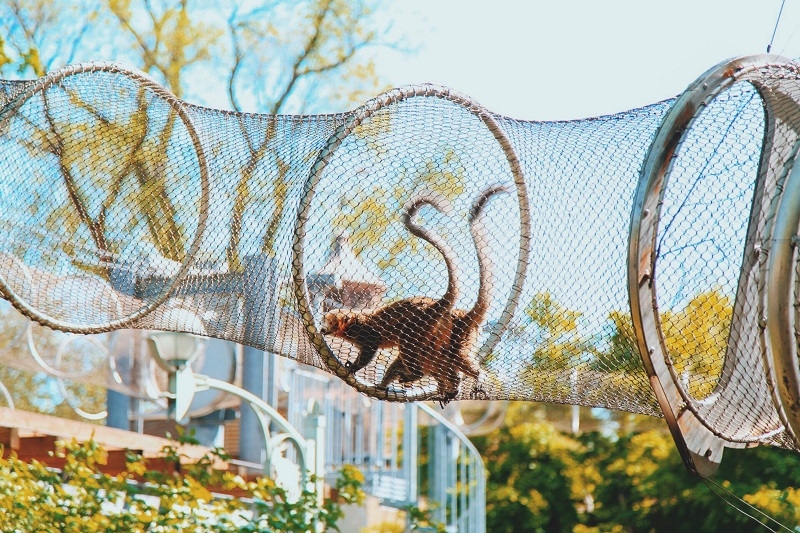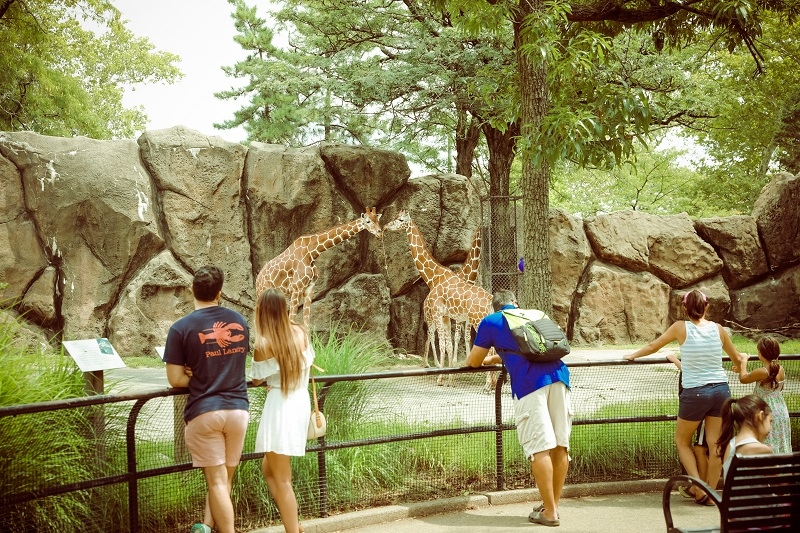
If you think a zoo is just a place to see animals, the Philadelphia Zoo will change your mind. This isn’t just any zoo — it’s America’s first zoo, a piece of living history tucked into the heart of Fairmount Park. Opened in 1874, the Philadelphia PA zoo has been setting trends in animal care, education, and conservation for over 150 years.
From tigers walking overhead in the Zoo360 trail to holiday lights that transform the grounds during LumiNature Philadelphia Zoo, this place blends history with innovation in a way few attractions can match. Whether you’re a firsttime visitor or a local who hasn’t been in years, here’s how to experience the zoo Philadelphia like you own the place.
Most cities have a zoo. But the Philadelphia Zoo Philadelphia PA was the very first in the nation. Chartered in 1859 and finally opened in 1874 (thanks to the Civil War delaying construction), it started with just a few hundred animals. Today, it’s home to nearly 1,900 creatures across more than 340 species.
It’s not just the size or the animals that make this place legendary. This is the zoo that’s been first in a lot of ways — from breeding orangutans and chimpanzees in the U.S. to pioneering the concept of a children’s zoo. It even created the nowfamous Zoo360 animal travel system — an idea so good other zoos copy it.
The fact that you can literally have a tiger walk right above your head That’s the Philadelphia PA zoo flexing its creativity.
Explore More: Do City Travel Itinerary Planning Without Being Overwhelmed
The zoo is open year round, but knowing the Philadelphia Zoo hours helps you plan a smoother visit:
Tickets must be booked online in advance — no casual walk ups. Parking is $19 (free for members), and membership can pay for itself in just two visits if you’re local.
Pro tip: Arrive mid morning for fewer crowds, especially if you’re planning to stay into the afternoon.
The zoo Philadelphia sits at 3400 W. Girard Avenue in West Philly’s Fairmount Park. Driving is easy, but public transit works just as well — Route 15 trolley or Route 38 bus drop you right outside. Seasonal PHLASH buses also connect the zoo with other major Philly attractions.
The Philadelphia Zoo Philadelphia PA is too big to see everything in one rush. Here’s how to prioritize so you hit the best spots.

The first zoo in America doesn’t just keep animals in enclosures — it lets them wander above your head. Zoo360 is a mesh enclosed network of overhead walkways and ground level trails that connect habitats across the zoo. Tigers, lemurs, orangutans, and even meerkats roam these pathways, creating one of a kind encounters for visitors.
You might look up and lock eyes with a leopard. Or find an orangutan casually strolling a treetop bridge. It’s a small detail that makes the zoo feel alive — and unpredictable in the best way.
If you love big cats, this is your spot. Big Cat Falls is lush, dramatic, and full of personality — home to lions, tigers, pumas, leopards, and jaguars. The viewing areas put you up close without glass glare, so your photos look like you’re on safari.
This 2.5acre space mixes indoor and outdoor habitats for gorillas, orangutans, gibbons, and other primates. The design encourages natural behaviors — so you’ll see gorillas lounging, gibbons swinging, and orangutans getting creative with tools.
The McNeil Avian Center is a climatecontrolled rainforest for rare and endangered birds. It’s calm, immersive, and makes you forget you’re in the middle of Philly. Flamingo Cove, meanwhile, is pure joy — bright, social flocks in an openair habitat.
The first zoo in America was also the first to introduce a children’s zoo, and its modern version — KidZooU — is a dream for younger visitors. Think barnyard animals to brush and feed, plus indoor play zones that teach conservation in kidfriendly ways.
Giant river otters (yes, the ones that started the first North American breeding success here) are the stars. Red pandas, vampire bats, and small reptiles round out this surprisingly peaceful corner.
They’re small addons but worth it if you’re visiting with kids.
The Philadelphia Zoo Philadelphia PA keeps the learning handson with daily keeper chats. Times vary, but highlights include:
These are free with admission and worth timing your day around. The keepers share insider details you won’t get from signs.
By day, the zoo is about animals. By night in winter, it turns into a glowing wonderland called LumiNature Philadelphia Zoo.
Running late November through early January, LumiNature fills the grounds with over a million lights across 16 themed zones. Highlights include:
It’s less about animal viewing (most are inside) and more about soaking up the magic. Tickets are timed and sell fast — book early.

A full visit takes about four hours, but here’s a solid plan:
The Philadelphia Zoo Philadelphia PA isn’t just for show. It’s a serious conservation hub. From breeding critically endangered species to running global wildlife rescue programs, it uses its platform to protect animals in the wild.
KidZooU even uses green architecture — rain gardens, geothermal heating, and green roofs — to lead by example.
You can visit any city zoo, but only one lets you say you’ve been to America’s first zoo. The Philadelphia Zoo is history you can walk through — with modern twists that keep it exciting. Whether you’re here for a family day out, a photography adventure, or the electric glow of LumiNature Philadelphia Zoo, you’ll leave with more than just pictures.
You’ll leave with the sense that this place — this first zoo in America — still matters.
You may also like: Best Culinary Cities to Explore in the US: Foodie City Guide
The Philadelphia Zoo isn’t just another attraction — it’s America’s first zoo, a place where history, wildlife, and innovation come together. From tigers prowling overhead to the glow of LumiNature Philadelphia Zoo, every visit feels different. It’s big enough to spend hours exploring but personal enough to create real connections with the animals. Whether you’re visiting for the first time or returning after years, the Philadelphia PA zoo still knows how to surprise you. This is the zoo Philadelphia that set the standard — and still leads the way.
This content was created by AI